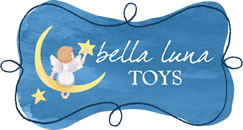
Water | Resources
Croscil Garden Mist Comforter
Question from MA
I recently purchased a Croscil Garden Mist Comforter. I have it 2 weeks and it still smells like petroleum. I have left the window open and run a fan and nothing helps. Can anyone tell me how to get rid of this terrible odor. It is giving us headaches and sore throats. I would like to keep it but I am thinking about returning it to the store. Help!
Debra’s Answer
I would return this item. I looked online and found the top is 100% polyester, the bottom is 65% polyester and 35% cotton, and the fill is unspecified, so I’m willing to bet it’s polyester too. Polyester fabrics typically have a formaldehyde-based finish that cannot be removed. That’s probably what you are smelling.
Back to the store.
Safe Spray for Air Conditioner Coils?
Question from audrey
I pay for a service to repair things in my condo like the toilet, appliances etc. Once a year they will come and check the air conditioner, drain the line, add freon (which will not be available anymore by 2015 for your info).
They usually spray a fragrance on the coils which I will not do (have mcs). I have had the coils cleaned by a company and spoke to them but they have no idea what can be sprayed on the coils that is fragrance free and non toxic.
Does anyone know of any product that is safe to spray on the ac coils? Thank you.
Debra’s Answer
I don’t know, but is it really necessary?
Auto Windshield Seal Outgassing
Question from Barb P
I had new windshields installed in both my cars by two different companies. Unfortunately, one car has a terrible odor even months later after being aired out in the sun and with an ozinator. It’s a different brand from the one that doesn’t smell. One mechanic said it was the new seal, but I have no way to prove it. The windshield installer says it’s not his seal or adhesive. Any ideas? I’t hard to smell a seal, but when I put my nose up to it, I do smell the rubber smell, but the installer says he doesn’t.
Debra’s Answer
I think it is the seal.
Ask the installer for the brands of all materials used and look at the MSDS for each. Just type “Name of Product MSDS” for each product and you should be able to find them.
The MSDS will give you the FACTS on the toxic ingredients, not your installer’s opinion.
Optimus Radiant Parabolic Heater
Question from Glo
I have severe MCS and have had difficulty finding a space heater that I can tolerate. I wonder if you know anything about a Optimus H-4110 9-Inch Dish Heater. Would like to know what your thoughts are on this heater. Thanks
Debra’s Answer
I don’t have any personal experience with it. But it looks like it has a minimum of plastic parts.
Anyone have any experience with this heater?
Read past posts about space heaters at Q&A: Portable Heaters with Metal Housings
Pesticides on Foreign Textile Products
Question from Richard
Hi Debra, for a long while I’ve been confused about whether imported organic clothing and textiles are sprayed with pesticides before entry into the country. I try to order USA Made organic made products whenever I can but this isn’t easy. Recently I ordered a color grown HABIDECOR rug made in Portugal. It seems fine. However I don’t want to be unwittingly purchasing items that are being sprayed with something so they can be imported into the country. I’ve tried getting an answer for this online without success. Are only raw imported textiles sprayed or finished goods as well?
Thank you for your time Debra. Love your site!
Debra’s Answer
Here’s a link to a forum for architects where they are discussing toxic chemicals in shipping containers because there is a lot of interest now in using shipping containers to make housing: Shipping container floors NOT sustainable AND toxic!
So these are the shipping containers things are shipped in from China and other countries.
Pesticides may or may not be sprayed on the cargo itself. But you have no way of knowing.
Another reason to buy Made in the USA!
Beds for Kids
Question from Marie
Debra, I am researching safe, non-toxic beds to purchase for my two small children. I need a crib and a toddler bed. I was considering the “MINNEN” bed from Ikea for the toddler bed. The product description states: “Steel, Pigmented epoxy/polyester powder coating. Slatted bed base: Solid wood, 100 % polyester.” Does this sound safe?
With regard to the crib, I was considering the ” Babi Italia Mayfair Curved Convertible Crib – Oyster Shell or the “DaVinci Jayden 4-in-1 Convertible Crib”. Both of these cribs are sold at Babies R US. Both of these companies emphasize having lead-free paint, being made from renewal resources, and being safer than other manufacturers (reference this link: ). However, I have no way of knowing for certain whether or not these cribs are made from solid wood. I tend to doubt they are, but I cannot find any information to help me determine this.
What do you think about these products and do you have any suggestions of other cribs or toddler beds?
Debra’s Answer
I looked at the Minnen bed and yes, it looks fine to me. You probably don’t want to use that mattress, but the frame is fine.
I also like the Sniglar crib at IKEA. Again, I wouldn’t use their mattress.
Choose a mattress from Debra’s List: Cribs, Mattresses and Bedding https://www.debralynndadd.com/debraslist/cribs-mattresses-and-bedding
Bella Luna Toys
 “Unique natural toys and products for children and families that are safe, healthy and encourage imaginative play. You will find no battery-operated or plastic toys here, the kind that will be played with for a short time before ending up in a landfill. Our quality toys are not disposable. They are built to last; the kind of toys that can be passed on or handed down to future generations. Most of our toys are made in the USA, Germany or Canada. The ones made overseas are certified to be ethically and sustainably made. Our toys have been tested to meet the strictest safety standards.”
“Unique natural toys and products for children and families that are safe, healthy and encourage imaginative play. You will find no battery-operated or plastic toys here, the kind that will be played with for a short time before ending up in a landfill. Our quality toys are not disposable. They are built to last; the kind of toys that can be passed on or handed down to future generations. Most of our toys are made in the USA, Germany or Canada. The ones made overseas are certified to be ethically and sustainably made. Our toys have been tested to meet the strictest safety standards.”
 |
Listen to Debra’s 2013 interview with Bella Luna Toys Owner Sarah Baldwin. |
Oompa – Naturally Brilliant Toys
 Literally hundreds of wooden and organic toys from around the world. “With a keen eye for MODERN design, superior craftsmanship, fine materials, and high play value, we continuously search the world for the best toys for your child. We seek out manufacturers that make sincere efforts to respect the planet and that provide safe, nurturing environments for their employees.” Search by age, brand, category, and country.
Literally hundreds of wooden and organic toys from around the world. “With a keen eye for MODERN design, superior craftsmanship, fine materials, and high play value, we continuously search the world for the best toys for your child. We seek out manufacturers that make sincere efforts to respect the planet and that provide safe, nurturing environments for their employees.” Search by age, brand, category, and country.
Chemical “Soup” Clouds Connection between Toxins and Poor Health
I highly recommend reading this article from last week’s Scientific American.
It’s an interview with Linda Birnbaum, the toxicologist who leads the National Institute of Environmental Health Services (NIEHS) and the National Toxicology Program (NTP).
She makes some interesting statements.
How much of human disease is due to environmental exposures?
The estimates vary, and it depends on how you define environment. People often say it’s about 30 percent. I think that’s defining environment fairly narrowly, considering only environmental chemical exposures, but your environment includes the food you eat, the drugs you take, the psychosocial stress you’re exposed to and so forth. After all, what’s the difference between a drug and an environmental chemical? One you intentionally take and the other one you don’t. Considering all that, I would say then the environment is much more than 30 percent.
Why has it been so difficult to link environmental exposures to specific health consequences?
Nobody is exposed to one chemical at a time, right? I mean we live in a soup of chemicals and we live in a soup of exposures. Here, I’m having a lemonade. Well, it’s not only lemon in here. I’m sure there’s some sugar. There might be a preservative or something. I don’t know what’s in this. So think of all those things interacting, but when we test chemicals in the lab we tend to test them one at a time.
I guess we don’t consider these other types of exposures.
Right. A high-fat diet, for example, can completely change the way your body handles chemicals. Exposure to a certain chemical may lower your ability to respond to an infection. At EPA we did a lot of studies exposing rats and mice to air pollutants and then to bacterial infections or influenza infections. Those who were exposed to pollution were more likely to die, whereas those in clean air recovered.
PCBs are considered likely carcinogens, but they are also endocrine disruptors, like bisphenol A or dioxin, which is something we’ve heard a lot about in the media lately. What is your definition of an endocrine disruptor?
An endocrine disruptor is anything that affects the synthesis of a hormone, the breakdown of a hormone or how the hormone functions. We used to think it had to bind with a hormone receptor but endocrine disruptors can perturb hormone action at other stages in the process.
Why are they such a big deal?
They’re all around us, and I think they can affect us at very low levels. Our hormones control our basic homeostasis, our basic physiology. If you alter your hormone levels, you’re not going to behave the same way physiologically, and that includes mentally and everything else. I think that there’s growing evidence that some of the chemicals to which we are exposed are doing that to the population right now.
How has spending 33 years studying toxic chemicals affected your outlook on the environment?
We do know that there are many chronic health conditions, non-communicable health conditions, which have increased too rapidly in the last 20 to 40 years. These are things like autism, ADHD and, of course, obesity and diabetes. We have identified chemicals clearly at play in the obesity epidemic. I am not in any way saying to people you can stop exercising and you don’t have to watch what you eat, but the question I have is: Are we setting people up to fail because they’re exposed to something that alters their ability to metabolize fats or sugars?
Source: Scientific American: Chemical “soup” Clouds Connection ebtween Toxins and Poor Health
A Simple Solution to Block Wireless Signals
I love this story, sent to me by a reader.
Some residents of San Francisco (where I used to live) were having problems with their wi-fi. It turned out that the interiors of their Victorian and Edwardian-era houses were lined with chicken wire as a base to hold the plaster on the walls.
Want to block wireless in your home? Perhaps chicken wire will do the trick.
Source : Wall Street Journal: Culprit in Wi-Fi Failures: Chicken Wire






